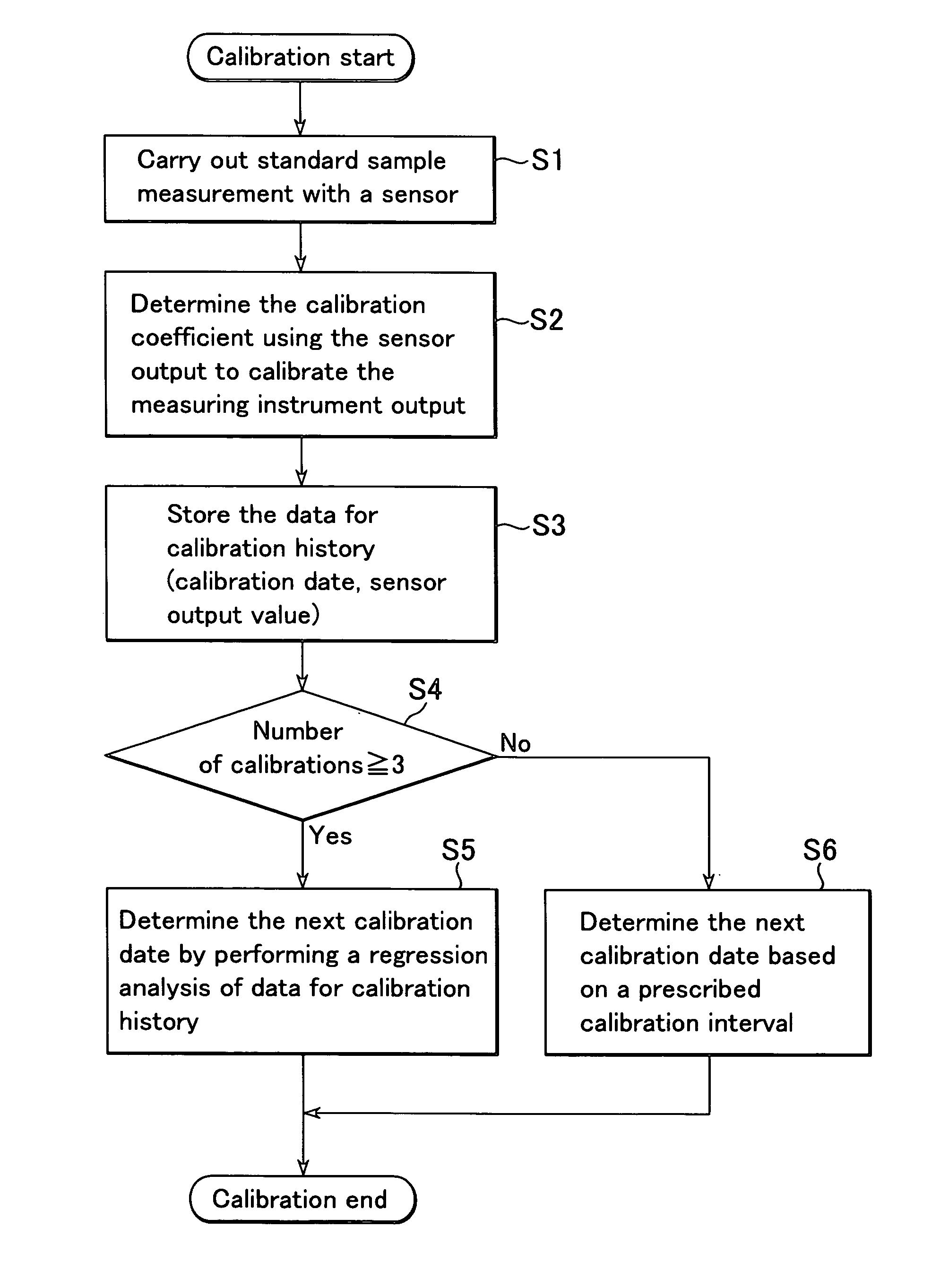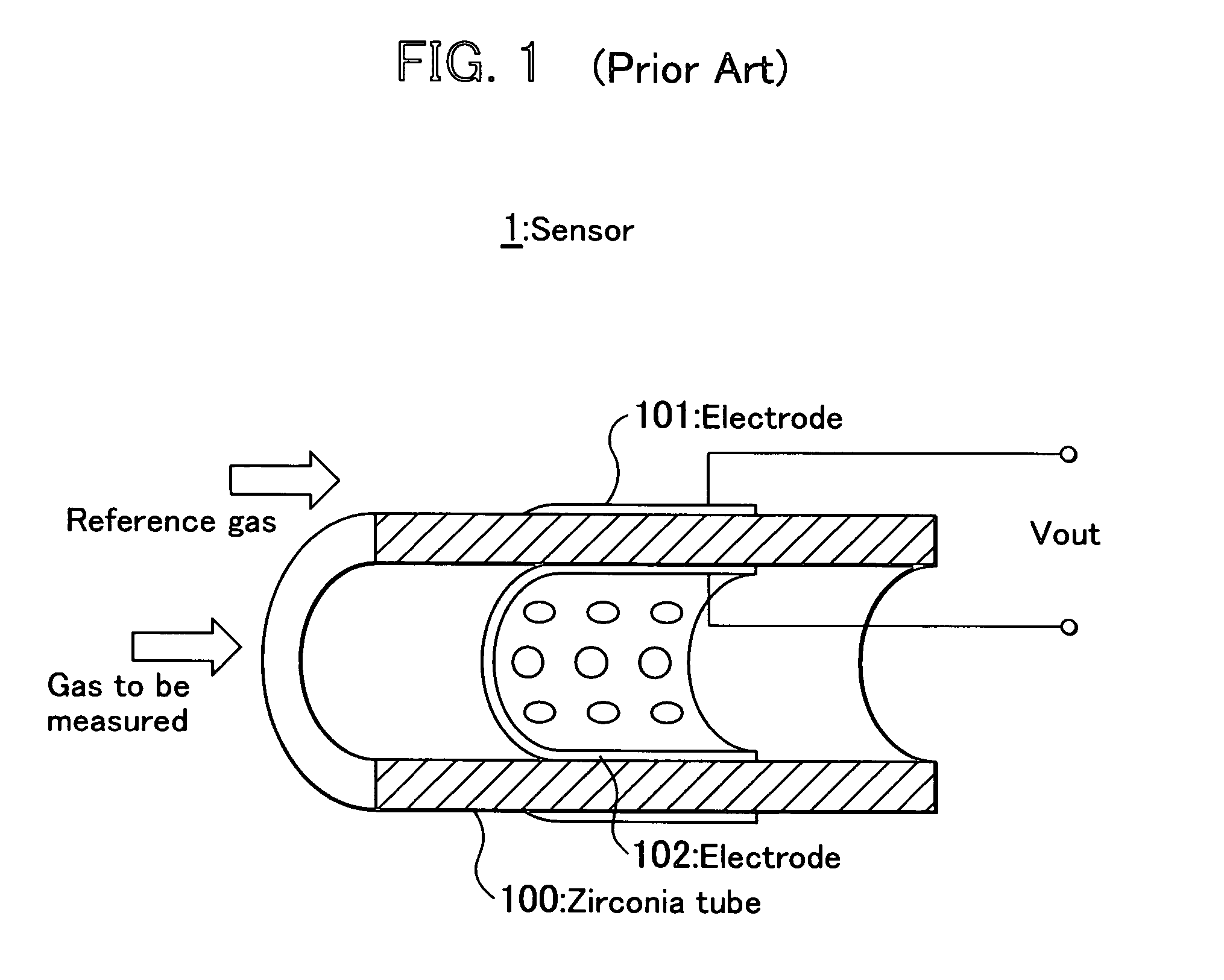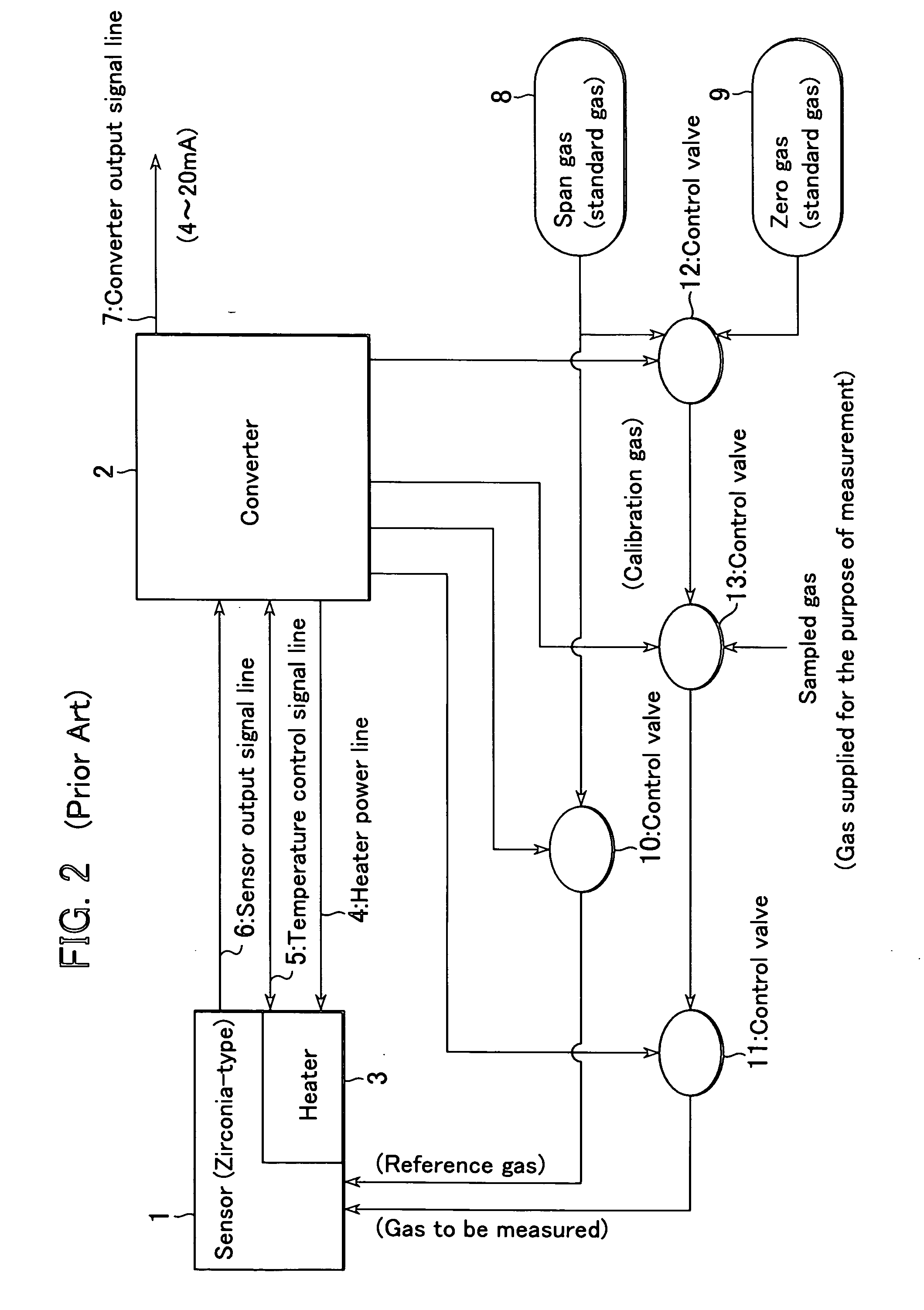Calibration method and zirconia-type oxygen analyzer using this method
a zirconia-type oxygen analyzer and calibration method technology, applied in the direction of instruments, liquid/fluent solid measurements, electrochemical variables of materials, etc., can solve the problems of shortened working life of the measuring instrument, consumption of more expensive standard gases, and increased /b> cost, so as to eliminate the excess consumption of expensive standard gases
- Summary
- Abstract
- Description
- Claims
- Application Information
AI Technical Summary
Benefits of technology
Problems solved by technology
Method used
Image
Examples
Embodiment Construction
[0036] The calibration method of the present invention and a zirconia-type oxygen analyzer using the method are described below using drawings.
[0037]FIG. 3 is a flow diagram indicating an embodiment of the calibration method of the present invention. As shown in the diagram, in the calibration method of the present invention, a standard sample having a known value is first measured by the sensor (S1). Next, the calibration coefficient is calculated so that the indicated value of the measuring instrument shows the predetermined value (value of standard sample) for the sensor output value at that time to calibrate the measuring instrument output (S2).
[0038] In addition, the sensor output value at that time is also stored as the data for calibration history together with the calibration date (S3).
[0039] Next, the number of calibration points in time is detected (S4) and if the above number of calibrations is equal to or larger than three, these data for calibration history for calib...
PUM
| Property | Measurement | Unit |
|---|---|---|
| temperature | aaaaa | aaaaa |
| concentration | aaaaa | aaaaa |
| EMF | aaaaa | aaaaa |
Abstract
Description
Claims
Application Information
 Login to View More
Login to View More - R&D
- Intellectual Property
- Life Sciences
- Materials
- Tech Scout
- Unparalleled Data Quality
- Higher Quality Content
- 60% Fewer Hallucinations
Browse by: Latest US Patents, China's latest patents, Technical Efficacy Thesaurus, Application Domain, Technology Topic, Popular Technical Reports.
© 2025 PatSnap. All rights reserved.Legal|Privacy policy|Modern Slavery Act Transparency Statement|Sitemap|About US| Contact US: help@patsnap.com



